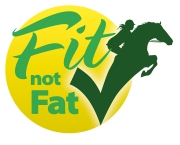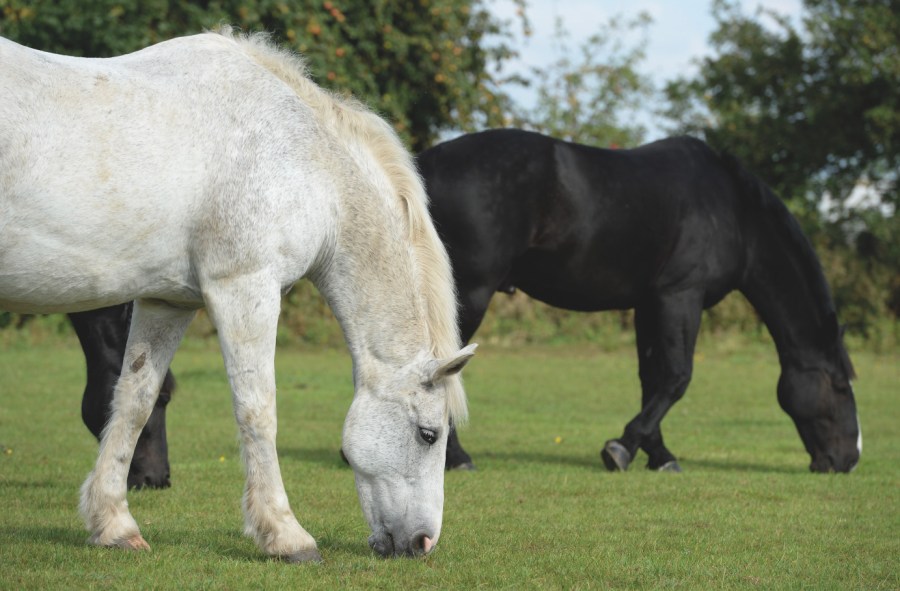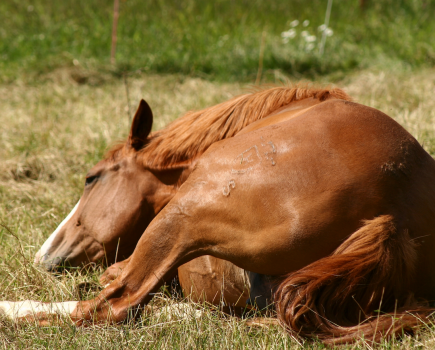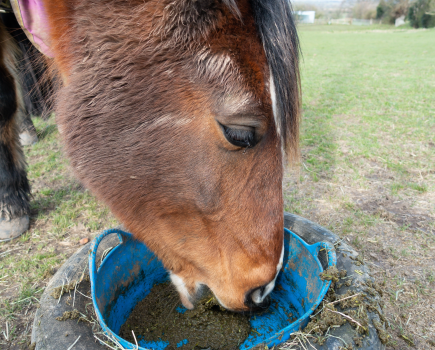As with humans, weight gain can slowly creep up on our horses without us really noticing. They are designed to lose weight through the winter, however, modern management means it’s harder for horses to follow a natural weight loss/gain cycle.
This means many will have failed to shed some pounds over the last few months. Consequently, many horses go into spring already overweight and are at high risk of suffering serious horse health conditions linked to obesity.
In their natural environment, horses follow a cycle whereby they gain weight over the summer when there is an abundance of grass and food to forage.
Then they lose it in winter when the quality and amount of grass falls, so there is less food to eat, and the reduction in temperature means horses expend more energy staying warm.
However, modern environments mean that we continue to feed our horses through the winter and we put rugs on them, halting their natural ability to lose weight.
Add to this the fact that we often ride and exercise our horses less in winter, and what we end up seeing is horses not only maintaining their summer waistlines, but also potentially putting on even more.
Dangers of being fat
An increasing number of horses fall into the ‘overweight’ and ‘obese’ categories. It might seem acceptable to us to have ‘round’ horses and ponies, but the dangers of being too fat are serious.
Obesity is a trigger factor for conditions such as EMS (equine metabolic syndrome), which causes insulin dysregulation and laminitis.
The biggest thing you can do as a horse owner is try and avoid any weight gain in the winter and, if possible, encourage weight loss. If that hasn’t been successful, or your horse still needs to lose weight, it’s about being on high alert coming into the warmer months.
Alongside metabolic issues, being overweight also places extra strain on a horse’s joints and other body systems. No one likes to see their horse or pony being starved, but there are ways that we can use winter to help horses lose a few pounds safely and naturally.
Your horse’s current condition
The first thing to do is assess your horse’s current condition. You could do this yourself if you are confident at body condition scoring, or you could ask your vet or qualified nutritionist to help you not only assess your horse but also show you how to condition score.
A weigh tape are cheap and easy to buy a useful way for you to monitor your horse’s weight. You could also take your horse to a weigh bridge to get an accurate start point reading, and then use a weigh tape to help assess any future weight loss.
It’s important not only to work out what your horse currently weighs, but also to know what his weight should ideally be, so that you have a start and end point and know exactly how much they need to lose.
It’s worth pointing out that most horses will come out of summer carrying a few extra pounds, as nature intended to help see them through the winter. It’s only a problem if they continue to carry that weight all the way through the colder months and don’t lose any.
Working out what they need to lose
When it comes to the amount of weight a horse should lose over the winter, it really does depend on the individual — how overweight they are and how quickly or easily they lose weight.
Some horses lose weight easily, whereas others take a lot more work. The best way to start is to work out what your horse weighs at his heaviest at the end of summer, and what his ideal healthy post-winter weight should be, and then monitor that weight loss gradually over weeks and months.
Sudden and severe weight loss over a few days could indicate a health problem, and should be investigated by your vet, but as long as the weight loss in the healthy horse is gradual, it should be safe.
Over time, you’ll work out your horse’s natural weight loss and gain cycle. The key thing to appreciate is that it is much easier to put weight on an underweight horse than it is for an overweight horse to lose weight, and horses are designed to look a little thinner coming out of winter.
Seeing ribs isn’t a bad thing
When using the Body Condition Scoring range, the ideal is for your horse to be a 4 or 5 out of 9 in summer, when the temperatures are warm and turnout is plentiful.
That means allowing your horse to score one either way — that is, one less in the winter (a score of 3) and one more in late summer (a score of 6) — is an acceptable and natural weight fluctuation through the year.
It’s important to stand by what is right for your horse. We need to banish the belief that being able to see your horse’s ribs coming into the spring is a bad thing — it is how nature intended them to be.
It’s easy to be bullied or cajoled into doing things that aren’t suitable for your horse by other liveries or even the yard staff, so stick to your guns. You know what is best for your horse and you’d rather they were fit and healthy than overweight and on the verge of a life-changing metabolic condition.
There are things everyone can do to manage their horse’s weight, including the following:
1 Feed forage first
If you’re going to increase any feed because you are concerned your horse needs energy for ridden work or they are losing weight, make sure it’s forage and fibre first.
2 Take off their rugs
Don’t rush for the rugs unless your horse is old, very young, fully clipped or unwell. We might feel cold, but horses have a far higher tolerance for temperature differences than we do, and probably don’t need those extra layers just yet.
3 Embrace mother nature
Allow mother nature to give your horse a helping hand at weight loss. Cold temperatures kick-start the horse’s metabolism to use up some of those stored calories in the fat tissue to help keep them warm. Keeping a horse naked where appropriate is a great way to ease them into it. Of course, if it’s pouring with rain and blowing a gale, provide protection in the form of a thin rain sheet if there’s no natural protection or field shelter.
4 Use small-holed haynets
Putting your horse’s forage ration into small-holed haynets will mimic the natural grazing approach of little and often. It will also help to string out the meal for as long as possible. It’s safe for horses to go for a couple of hours (but no more than four) without any food, particularly over night when the acid secretions in the stomach are naturally lower.
5 Enrich your horse’s environment
Stabled horses get bored, especially if they’re on restricted forage. Other methods of entertainment include stable toys such as balls, mirrors and treat balls with high-fibre nuts, which can also be hidden in hay to encourage your horse to forage.
Beware high sugar levels in spring
The evenings are noticeably lighter in the UK now, and it is only a matter of weeks until we can finally say “it’s spring”.
However, spring is the time for frosty nights and sunny days, which can be a laminitis trigger. It’s not just because the grass is growing, but also because it’s full of sugar after a hard frost.
You can’t tell just by looking at your paddock whether the grass is high in sugar, but one thing you can be sure of is that cold nights and sunny days will increase the risk of laminitis, and if your horse is teetering on the edge of being overweight or having undiagnosed Cushings or EMS, that is going to be a risky period.
Horse owners need to reduce the rate at which horses can eat that grass, so that could be fencing off a smaller area of the paddock or strip grazing, and using a muzzle which create a trickle-feeding effect.
People often shy away from grazing muzzles, but they can be life-savers. It’s crucial that horses are trained to wear a muzzle so they can eat and drink comfortably. Usually, after an hour, the horse has worked it out.
I advise my clients that if they have a horse who is aged 15 or over, it is worth testing them for Cushing’s disease. Even if they are not displaying all the obvious signs, this is the time of year that undiagnosed Cushing’s horses can get laminitis.
This doesn’t happen because their Cushing’s has suddenly appeared, it’s that the sugar in the grass has triggered laminitis. So talk to your own vet about the combination of risk factors (breed and age), as catching it early is key.

Have you heard about Your Horse’s #FitNotFat campaign? Equine obesity is an enormous welfare problem and we’re on a mission to provide owners and riders with the knowledge, skills and information you need to keep your horse in tip-top health. It could be life saving!
Related content
- Cushing’s disease in horses: vet advice for recognising and managing symptoms
- The truth about equine weight gain, new grass and the risk of spring laminitis
- Why metabolism is important to your horse’s health and 4 ways to support it
- Interval training: how to do it and what the benefits are for every horse
- Equine metabolic syndrome: what it is, risk factors and prevention advice









